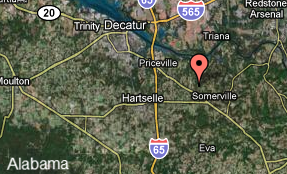Please compare ScanLook with the "top-end" systems.
The top-end systems include Optech and the Riegl scanners (i.e. Riegl, Trimble, Streemapper). These systems are all capable of providing very good data in the right users hands. They are all a very big investment ($800k to over $1M). They each weigh well over 100 pounds (if not two or three times that in total), require at least two people two handle them, involve custom mounting, and require a cabled control unit within the transport vehicle.
These systems all employ a V- or L-shaped dual scanner head configuration to minimize shadowing. This means that there is considerable shadowing relative to an area scanner such as those produced by Velodyne. These systems use lasers capable of measuring 5 to 8 mm. They use a variety of INS solutions (IGI, Applanix, etc).
The ROI (return on investment) on these systems requires an income of $60,000 to $80,000 per month for 36 consecutive months. That's a lot of work and generally more than our small company could guarantee we could generate.
For these reasons, we built ScanLook. We are fortunate that we had the necessary skill sets to do so. We are confident it is the future of mobile mapping systems. It's price is significantly less than all other systems but the low-end MDL units and it performs at the level of the high end systems.
Our price ranges from around $100k to $300k.
In addition to a pricing advantage we have the advantage of scanner flexibility (FARO FOCUS 3D, Velodyne HD32, Neptec OPAL, custom Multi-beam, Z+F, etc.).
We also have a clear mindset to avoid the "not developed here" syndrome and to look elsewhere for solutions that already exist. For instance, we think the NovAtel Inertial Explorer software is top-notch and recommend it for all INS processing. We leverage NovAtel's expertise to the advantage of all parties. This works even for IMU's not developed at NovAtel.
Using the F3D (FARO FOCUS 3D) we can get very good high definition scans. Mounted at a 30 degree tilt it even does a fair job at collecting a lot of GIS data. However, when this is combined with the Velodyne HD32 the results are really amazing. The Velodyne is a GIS grade (1 to 2cm) scanner but its 32 lasers in a 40 degree field of view allows for only the smallest areas to escape its view.
In addition, the Z+F scanners produce outstanding data as well. Even more, existing static scanners can be used to further capitalize on the client's investments. The Z+F Profiler gives a full 120m range, 200Hz spin rate, excellent millimeter level data, and a good price point. Z+F support is also top of the line.
With the introduction of the FARO X330, range under 100 meters was no longer a restriction. The X330 provides several hundred meters of scanning range and at a very affordable price.




